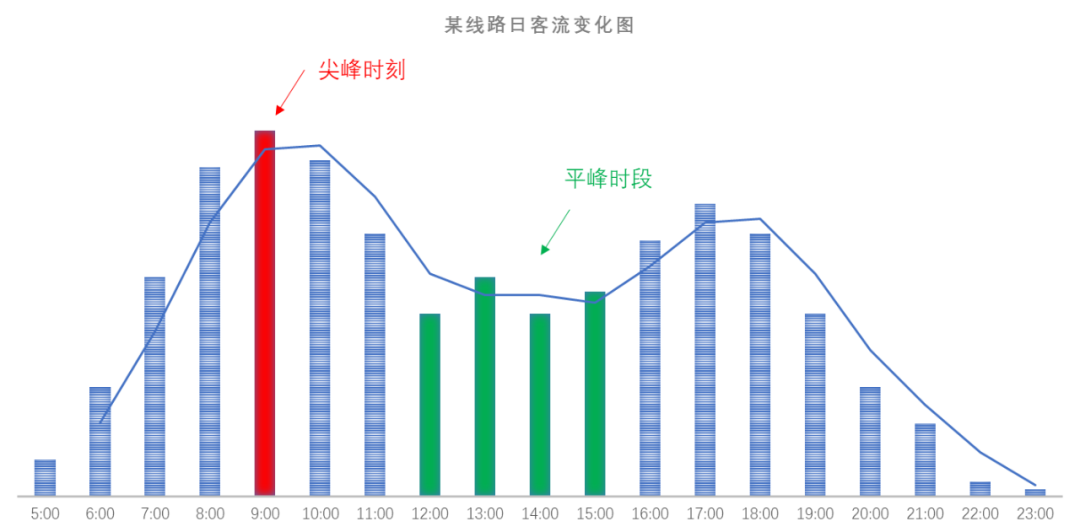Public transport operation scheduling is an important guarantee for the efficient and orderly organization of bus operation lines and production activities. It is also a top priority in the operational management of bus companies. Scientific and reasonable bus scheduling is crucial for ensuring that public transport operations meet the travel needs of citizens, achieving both economic and social benefits in public transport operations.
The essence of operation scheduling is to achieve the optimal match between line capacity input and passenger demand through reasonable scheduling strategies and scientific scheduling methods. Among them, daily scheduling is the foundation of public transport operation scheduling, while real-time scheduling is essential for ensuring efficient bus operations. For specific lines, we need to fully understand the passenger flow patterns and characteristics, deeply comprehend the operational requirements at different times, and determine the number of vehicles and intervals for each time period based on passenger flow, flow time, and flow direction. This will guide the formulation of the vehicle operation plan and the daily scheduling plan, which will be used to direct the operation of public transport vehicles.
Taking a specific line as an example: It is well known that the operation of bus lines must first meet the travel demand during peak hours, especially during rush hours. To satisfy passenger travel needs, we must first calculate the number of vehicles required to pass through the corresponding line during peak/rush hours, the hourly departure interval, and the number of vehicles. The calculation formulas are as follows:
(1) Hourly passing vehicles = Cross-section passing volume / (Vehicle capacity * Load factor standard);
(2) Hourly departure interval = 60 / Passing vehicles;
(3) Number of vehicles = Turnaround time / Departure interval.



Typical distribution map of bus passenger flow at different time periods
The number of vehicles directly reflects the service capacity of the line. Whether the number of vehicles allocated is reasonable directly affects the overall efficiency of the public transport system. If the capacity is insufficient, the supply of the line cannot meet passenger demand, leading to a decline in service levels. Conversely, if the capacity is excessive, it not only reduces resource utilization but also increases fuel consumption and operational costs. Therefore, the public transport operation scheduling process is a multi-objective decision-making process that must consider passenger travel demand while also taking into account public transport operational costs. Utilizing peak vehicle allocation throughout the day can maximize the satisfaction of citizens’ travel needs, but excessive capacity input during off-peak periods is undoubtedly a waste. When formulating the vehicle operation plan, it is also necessary to calculate the hourly departure interval and the number of vehicles for off-peak periods, effectively reducing the input of personnel, vehicles, and materials to lower public transport operational costs. We can also conduct more detailed classifications of bus passenger flow to analyze and obtain more detailed hourly departure intervals, vehicle numbers, etc., and reasonably determine daily scheduling arrangements to further improve the comprehensive utilization efficiency of various public transport resources such as vehicles, personnel, and capacity, continuously enhancing the level of public transport operation management and service quality.
In actual operations, considering the changes in factors such as personnel, vehicles, and roads, public transport operation scheduling must strengthen dynamic scheduling management while ensuring daily scheduling. This involves timely and real-time tracking of changes in passenger demand at different time periods and stations, flexibly adjusting capacity input and departure frequency, and rationally utilizing resources to continuously improve service levels. For example, during peak commuting hours, temporarily increasing departure frequency or operating interval buses; during low passenger flow periods, deploying smaller vehicles; during holidays or large events, increasing public transport service capacity on specific routes through vehicle pooling or regional scheduling; and opening express services at major stations during specific time periods for routes with high passenger volumes, etc.
In the future, with the continuous advancement of intelligent construction, daily scheduling will increasingly shift towards real-time scheduling. How to fully utilize resources and reasonably arrange the operation of scheduled vehicles will become an important means to continuously solidify quality foundations and achieve high-quality development in public transport.
END


Scan to follow us
Source: Transportation Research Institute
Submitted by: Li Yanna
Proofread by: Li Zhong
Reviewed by: Wang Fengbao
Supervised by: Zhou Xin

About Us
Our center mainly engages in public transport planning, bus network optimization, data analysis and traffic surveys, urban traffic infrastructure planning and design enhancement, standardized services, enterprise management consulting, safety technology consulting, information system planning/design/implementation/construction/operation and maintenance, cultural and artistic creation, traffic big data analysis and application, traffic micro-simulation, traffic impact assessment research, technical consulting for the creation of public transport cities and green travel cities, conference hosting, and business training.


Click to share

Click to collect

Click to like

Click to view